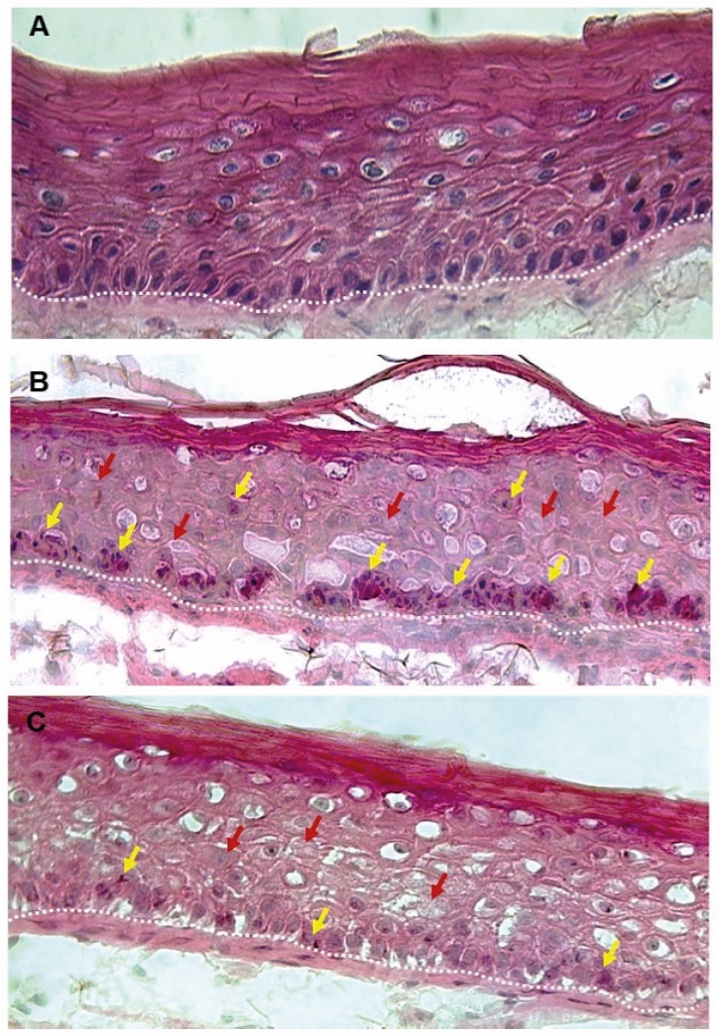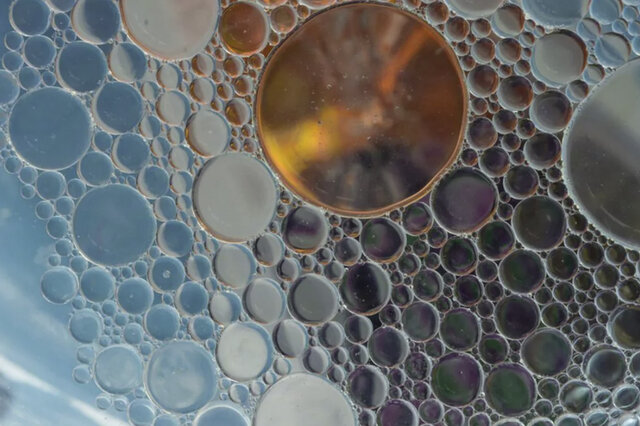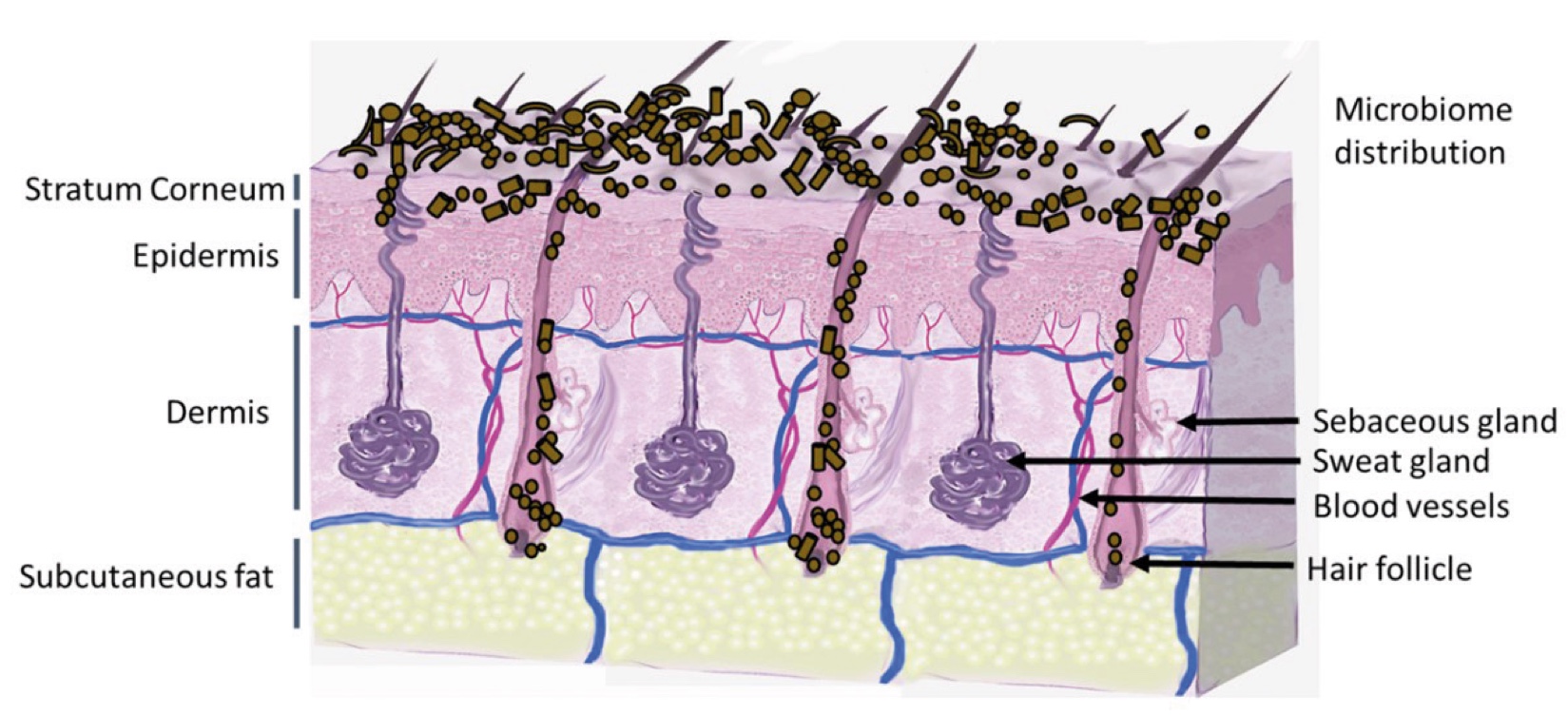
Hybrid Beauty
Skin care
peer-reviewed
Exploring Hybrid Beauty:
from the origins to the latest trends and regulatory challenges
DAVIDE MUSARDO
Claims & Efficacy Team Lead, Biorius, Wavre, Belgium
ABSTRACT: The cosmetics industry is in a constant state of reinvention, making it challenging for both consumers and regulatory scientists to keep pace with emerging trends. One of the most significant and enduring movements in recent years is Hybrid Beauty – a category that can be defined as “multifunctional cosmetics” – blurring the line between makeup and skincare but also including hair care and other segments, and offering cross-functional benefits in a single pot. In this article, we will explore the rise of hybrid beauty, its main categories and product examples, the key active ingredients driving this trend, regulatory considerations, and what the future holds for this dynamic category.
??????????????????
“
“A study in healthy women providing probiotic yogurt for four weeks showed an improvement in emotional responses as measured by brain scans”

Figure 1. Skin Section with Microbiome. Most microorganisms live in the superficial layers of the stratum corneum and in the upper parts of the hair follicles. Some reside in the deeper areas of the hair follicles and are beyond the reach of ordinary disinfection procedures. There bacteria are a reservoir for recolonization after the surface bacteria are removed.
Materials and methods
Studies of major depressive disorder have been correlated with reduced Lactobacillus and Bifidobacteria and symptom severity has been correlated to changes in Firmicutes, Actinobacteria, and Bacteriodes. Gut microbiota that contain more butyrate producers have been correlated with improved quality of life (1).
A study in healthy women providing probiotic yogurt for four weeks showed an improvement in emotional responses as measured by brain scans (2). A subsequent study by Mohammadi et al. (3) investigated the impacts of probiotic yogurt and probiotic capsules over 6 weeks and found a significant improvement in depression-anxiety-stress scores in subjects taking the specific strains of probiotics contained in the yogurt or capsules. Other studies with probiotics have indicated improvements in depression scores, anxiety, postpartum depression and mood rating in an elderly population (4-7).
Other studies have indicated a benefit of probiotic supplementation in alleviating symptoms of stress. In particular, researchers have looked at stress in students as they prepared for exams, while also evaluating other health indicators such as flu and cold symptoms (1). In healthy people, there is an indication that probiotic supplementation may help to maintain memory function under conditions of acute stress.
The definition of hybrid beauty
Despite its widespread use, "hybrid beauty" lacks a single, universally accepted definition. A review of marketing articles reveals a range of interpretations, but the core idea is, in general, related to multifunctional products, combining the visual, aesthetic benefits of traditional cosmetics like make-up with the active, skin-loving properties of skincare. This approach would aim to streamline the daily routines, keeping them easy to follow without sacrificing efficacy.
The idea is simple, and it also resembles the post-pandemic world we live in, where hybrid routines (1) have gained more space at work, in education, and even when it comes to sport. In this context, also for cosmetics, why rely on a separate moisturizer and foundation, or hydrating cream and sunscreen, when it is possible to have a single, versatile, and powerful cosmetic?
Tracing its multiple origin(s)
Before delving into the various categories of hybrid cosmetics, it is worth exploring their origins to understand how they have evolved into the sought-after products we see nowadays. And a hint can already be found in the name: the “hybrid” nature is not only related to their purposes but also to their diverse origins, each linked to specific needs and technological innovations.
Considering one of the most popular skincare products, the BB cream (blemish balm, beauty balm) designed to serve as a foundation, moisturizer, and sunscreen all at once, it seems to have been invented by the dermatologist Dr. Schrammek in Germany in the 1960s (2), to arrive years later in South Korea, where it was further refined before making its way back to Europe as a global beauty phenomenon.
Another famous example is the 2-in-1 shampoo and conditioner. Proto-formulations were first created in the 1970s, based on long-chain cationic polymers, such as polyquaternium-10 and cationic guar (3), however, without the powerful conditioning effect desired by consumers. A real breakthrough happened a few years later, in 1987, when Procter & Gamble launched Pert Plus or Pert 2-in-1. This haircare product was the first to introduce silicone - high molecular weight dimethicone - as a conditioning agent, which truly revolutionized and made this hybrid category emerge (4).
An attempt at classification
As seen from the previous two examples and given that versatility is one major feature of hybrid beauty, an exhaustive list of multifunction products would be difficult to achieve. However, starting from the classification proposed in the narrative review of Azevedo et al. (5), which captures the essence of hybrid products, it is possible to expand it and thus distinguish between:
- Function-based hybrids: These products serve multiple primary functions, combining the benefits of different cosmetic categories. For example, a foundation that not only provides coverage but also includes SPF for sun protection or a tinted moisturizer with anti-aging peptides.
- Ingredient-based hybrids: In this category, it is possible to find formulations where the same molecule serves multiple purposes, enhancing the product's versatility. For instance, a body cream that hydrates while brightening the skin thanks to niacinamide, or a lip balm with antioxidants for both protection and nourishment.
- Context-based hybrids: these products are designed for use in various contexts or on multiple body areas, like a moisturizing cream suitable for both face and body, or a mist that acts as both a setting spray and refreshing facial toner.
- Transformative-based hybrids: This category is linked to the characteristics of the formulations, which can change texture or appearance upon application, providing a unique sensory experience. Examples include oil-to-milk cleansers, cream-to-powder foundations, and gel-to-serum moisturizers, which therefore contain two distinct feelings.
This initial categorization may offer a way to frame these products, but it also has potential weaknesses, like the overlapping of categories. Indeed, many products could easily fit into more than one group. Thus, BB cream could be both function-based (coverage + SPF) and ingredient-based (hyaluronic acid for hydration + film-forming properties), while also being a transformative cosmetic.
In addition, the context-based category could be too vague because nearly all cosmetic products can be used in multiple contexts, depending on both the directions of use given by the brand, important for the safety assessment, but also considering the consumer habits, which can potentially expand the type of uses.
Popular examples of hybrid formulations
After outlining some possible macro-categories, it is also helpful to focus on some popular hybrid formulations that illustrate the diversity within this trend:
- Makeup + Skincare: The most iconic example is the BB cream, one of the hybrids at the origin of this trend, which offers light to medium coverage while providing skincare benefits like moisturization, sun protection, or anti-aging protection. An expansion of this beauty balm is the CC cream (6) – Color Correcting Cream or Complexion Correcting Cream – which provides the same benefit but with more intense color balance, keeping still a light texture, though there is no official definition also in this case and boundaries are blurred. Today, this category also includes foundations, which offer more intense coverage with matte, luminous, or natural finish, and are balanced with active ingredients like hyaluronic acid to impart hydration. We can also find lip balms that not only add a pop of color but also provide long-term moisture and protection from dryness.
- Skincare + Sun Protection: This is another important market segment, which is growing in parallel to the awareness about UV damage and the need for constant protection all year-round, with initiatives like the Sun Protection Campaign of the CTPA (7). Education programs have prompted consumers to look for products that not only protect from cancer risk, but also from the ageing effects, with additional benefits like brightening or pore-minimizing, thus leading to the development of hybrid products which are powerful as sunscreens but can also be used daily, in an easy way and light format. Intense body moisturizers, glowing primers, and nourishing lip balms that incorporate SPF have become essential for minimalistic, one-step routines, fostering the skinification trend in suncare (8).
- Classic Hair Care + Structural tratmente: hair hybrids addressing both aesthetic and structural needs are on the rise (9). The shift towards this mix is driven again by an increased awareness of the potential disruptive power that unhealthy lifestyles and environmental stressors can have. Therefore, in this category, it is possible to find products like bond-repair oils, leave-in conditioners, and multi-functional serums which protect against heat damage while taming frizz, or repair temporarily broken bonds, all while adding much-needed shine or smoothing hair cuticles.
- Fragrance + Skincare: as confirmed by market research (10, 11), multifunction products are becoming a real opportunity also for the fragrance industry, where the line between self-care and beauty continues to blur. Thus, many brands now offer body mists and solid perfumes enriched with skin-nourishing botanicals, soothing antioxidants, and moisturizing oils. These hybrids provide the evergreen pleasure of perfumes while caring for the skin, making them a luxurious two-in-one option, thus appealing due to their versatility while also tapping into the search for overall wellbeing.
Key ingredients and what’s next
After this broad overview of the categories and trendy market examples, attention should be given to some of the key ingredients on which hybrid products rely to deliver their skincare benefits. For instance, some of the most demanded facial care components in 2023 (12) were:
- Hyaluronic Acid (HA): Widely used in the cosmetic industry, HA and its derivatives, like sodium hyaluronate, are well renowned and used in face and body moisturizing products and in targeted eye-care and anti-wrinkle formulas for their hydration ability, film-forming properties and for smoothing the texture of the skin, depending on the different molecular weight (13).
- Niacinamide: This versatile and super-popular ingredient, the active form of vitamin B3 or niacin, has many effects. The most valued effect is related to the brightening and reduction of the look of hyperpigmentation (14). However, by interacting with the keratin filaments, it may function as a plasticizer and potentially increase the flexibility and softness of the stratum corneum in dry conditions (15), thus improving the epidermal barrier function (16).
- Salicylic Acid: Another well-established active, it consists of a small, lipophilic molecule, which can penetrate freely and rapidly into the epidermis by dissolving the intercellular cement of the stratum corneum, promoting the shedding of dead skin cells and unclogging of blocked pores, resulting in a smoother, more even complexion (17, 18).
And for the future? While these are some of the most common ingredients in today’s hybrid formulations, there are also exciting new frontiers to explore. For example, the world of fungi offers potent ingredients like Ganoderma lucidum and Euphorbia characias, known for their strong anti-tyrosinase activity, making them ideal for skin-brightening products. These extracts also provide powerful antioxidant protection, anti-wrinkle, anti-aging, and moisturizing effects, making them versatile, multifunctional additions to modern formulations (19).
Other promising ingredients to look for are peptides, such as synthetic ones inspired by spider toxins or those merging skin-aging and UV-protection effects, as discussed in a recent article (20).
Regulatory considerations
Hybrid cosmetic products are fascinating and represent an exciting world to discover, both for the consumers, following and giving life to the latest trends, and for brands and formulators, trying to innovate and stand out on the market. At the same time, while these hybrid products can charm with their versatile nature, they also represent unique regulatory challenges due to their intrinsic multifunctional nature, which can blur the line between cosmetics and drugs. What considerations should be taken into account, then?
One critical aspect would be the global variability, meaning that hybrid products can fall into multiple regulatory categories, such as cosmetics, over the counter (OTC) drugs, or even medical devices, depending on their claims and ingredients. A classic example of a brand selling on the global market is a tinted moisturizer with SPF that is classified as a cosmetic in the EU, but it is an OTC drug in the US and non-prescription drugs or natural health products in Canada. This creates significant challenges for brands looking to enter multiple markets, as it affects everything from formulation to labeling.
Another crucial facet is related to the claim substantiation. While this is essential for all cosmetic products, it becomes particularly important for hybrids, which often make a broader range of functional claims, which can expose this category to higher risk by crossing the line between cosmetic and therapeutic treatments. This could increase the chance of using borderline claims, thus potentially exposing the product to greater regulatory scrutiny. For instance, terms like "anti-aging," "whitening," or "skin repairing" can imply metabolic effects or physiological changes, triggering potential issues, depending on the context and especially if not carefully phrased and sustained.
Finally, with the growing emphasis on sustainability, many hybrid products highlight their ability to reduce waste and environmental impact, promoting themselves as eco-friendly solutions. However, claims in this area also need careful substantiation, considering the recent entering into force of the Packaging and Packaging Waste Regulation 2025/40 (PPWR) (21), and the proposal for a Green Claims Directive (22). In addition, authorities like the DGCCRF in France are increasingly focused on greenwashing and misleading environmental claims.
Conclusions
Hybrid beauty is a transformative trend that loudly shapes the cosmetics industry, shaking one’s hands with other major movements like skinification, “less is more”, and sustainable solutions. From the pioneering days of BB creams and 2-in-1 shampoos to the latest multifunctional serums and sunscreens, these products have evolved to meet modern consumers' changing needs and preferences. Thus, although not a new concept, these chimeric creations offer consumers innovative formulas while posing challenges and great opportunities to brands. And they are probably here to stay. At least for those daring to build bridges, push boundaries, and dismantle old habits.
Conclusion
The future of cosmetics lies in the continued evolution of holistic approaches which represents a transformative shift in the industry, merging scientific advancements, natural ingredients, and wellness principles. By understanding and embracing the interconnectedness of these elements, the cosmetics industry can cultivate products that not only enhance external beauty but also contribute to the overall well-being of individuals and the planet.
The interplay between beauty from within and topical cosmetics is the key for future products. The integration of biotechnology and green chemistry is revolutionizing cosmetic formulations, offering sustainable and biocompatible alternatives.
Developers can implement blockchain to trace the journey of ingredients from source to product. Nevertheless, the efficacy of the natural products should be scientifically proven. Marketers can communicate transparency as a brand value, and parallelly educate consumers by highlighting how specific ingredients contribute to radiant and healthy skin.
By embracing the synergy between these approaches and leveraging scientific advancements, the cosmetics industry can provide consumers with comprehensive beauty solutions that cater to both internal and external dimensions of beauty.
Surfactant Applications

The application area lends itself particularly well to the use of AI. Active today in this area is the US company Potion AI (6). The company provides AI-powered formulation tools for beauty and personal care R&D. Their offerings include Potion GPT, next generation ingredient and formula databases and AI document processing. Potion’s work could have a significant impact on the entire surfactant value chain, from raw material suppliers to end consumers. By using their GPT technology, they can help target work toward novel surfactant molecules that have optimal properties for specific applications. By using their ingredient and formula databases, they can access and analyze a vast amount of data on surfactant performance, safety, and sustainability. By using their AI document processing, they can extract and organize relevant information from patents, scientific papers, and regulatory documents. These capabilities could enable Potion AI's customers to design and optimize surfactant formulations that are more effective, eco-friendly, and cost-efficient. A particularly interesting application for this type of capability is deformulation.
Deformulation is the process of reverse engineering a product's formulation by identifying and quantifying its ingredients. Deformulation can be used for various purposes, such as quality control, competitive analysis, patent infringement, or product improvement. However, deformulation can be challenging, time-consuming, and costly, as it requires sophisticated analytical techniques, expert knowledge, and access to large databases of ingredients and formulas.
AI can potentially enhance and simplify the deformulation process by using data-driven methods to infer the composition and structure of a product from its properties and performance. For example, AI can use machine learning to learn the relationships between ingredients and their effects on the product's characteristics, such as color, texture, fragrance, stability, or efficacy. AI can also use natural language processing to extract and analyze information from various sources, such as labels, patents, literature, or online reviews, to identify the possible ingredients and their concentrations in a product.

Figure 2. Skin Section with Microbiome. Most microorganisms live in the superficial layers of the stratum corneum and in the upper parts of the hair follicles. Some reside in the deeper areas of the hair follicles and are beyond the reach of ordinary disinfection procedures. There bacteria are a reservoir for recolonization after the surface bacteria are removed.
References and notes
- Jimenez J. Hybrid Beauty and the cosmetics of the future | in-cosmetics Connect [Internet]. connect.in-cosmetics.com. 2021. Available from: https://connect.in-cosmetics.com/trends-en/industry/hybrid-beauty-and-the-cosmetics-of-the-future/
- Wikipedia Contributors. BB cream [Internet]. Wikipedia. Wikimedia Foundation; 2025. Available from: https://en.wikipedia.org/wiki/BB_cream
- Antonopoulos P. What is the science behind 2-in-1 shampoos and conditioners? [Internet]. Cosmeticsbusiness.com. 2018. Available from: https://cosmeticsbusiness.com/what-is-the-science-behind-2-in-1-shampoos-and-conditioners--146346
- Deckner G. Then and Now: Shampoo Formulations through the Years [Internet]. Prospector Knowledge Center. 2017. Available from: https://www.ulprospector.com/knowledge/6253/pcc-shampoo-formulations-through-the-years/
- Azevedo L, Araújo GP, Viana MC, Pinto NV, Marques G, Carneiro G. Origin, evolution, and multifunctional properties of BB Creams. HSJ. 2025 Mar 26;15:e1582–2.
- Wikipedia Contributors. CC cream [Internet]. Wikipedia. Wikimedia Foundation; 2024. Available from: https://en.wikipedia.org/wiki/CC_cream
- CTPA. CTPA Sun Protection Information for 2025 [Internet]. Ctpa.org.uk. 2025 [cited 2025 May 15]. Available from: https://www.ctpa.org.uk/press/ctpa-sun-protection-information-for-2025-8335
- Jagadev S, Stelmaszczyk O. Skinification: A Game-Changer in Sunscreen Usage [Internet]. Euromonitor. 2024. Available from: https://www.euromonitor.com/article/skinification-a-game-changer-in-sunscreen-usage
- Mordor Intelligence. Hair Care Market Size & Share Analysis - Growth Trends, Statistics & Forecasts (2025 - 2030) [Internet]. Mordorintelligence.com. 2019. Available from: https://www.mordorintelligence.com/industry-reports/hair-care-market-industry
- Singh S, Singh A. Body Mist Market - By Type, By Fragrance Type, By Price Range, By End User, By Distribution Channel & Forecast, 2024 – 2032 [Internet]. Global Market Insights Inc. 2024 [cited 2025 May 15]. Available from: https://www.gminsights.com/industry-analysis/body-mist-market?
- DiMarket. Solid Perfume Analysis Uncovered: Market Drivers and Forecasts 2025-2033 [Internet]. Datainsightsmarket.com. 2025 [cited 2025 May 15]. Available from: https://www.datainsightsmarket.com/reports/solid-perfume-1350752#summary
- COSSMA. Hybrid beauty in Europe [Internet]. COSSMA. 2024 [cited 2025 May 15]. Available from: https://www.cossma.com/marketing/article/hybrid-beauty-in-europe-37161.html
- Chylińska N, Maciejczyk M. Hyaluronic Acid and Skin: Its Role in Aging and Wound-Healing Processes. Gels. 2025 Apr 9 [cited 2025 Apr 13];11(4):281. Available from: https://www.mdpi.com/2310-2861/11/4/281
- Karadağ Köse Ö. Trending Topical Ingredients for Hyperpigmentation. Cosmetic Industry - Trends, Products and Quality Control [Working Title] IntechOpen; 2025 Feb 7 [cited 2025 Mar 24]; Available from: https://www.intechopen.com/online-first/1212593
- Sjöberg T, Fsahaye A, Nilsson E, Letasiova S, Namro I, Visdal-Johnsen L, et al. Niacinamide and its impact on stratum corneum hydration and structure. Scientific Reports. 2025 Feb 10 [cited 2025 Mar 6];15. Available from: https://www.nature.com/articles/s41598-025-88899-0.pdf
- Levin J, Momin SB. How much do we really know about our favorite cosmeceutical ingredients? PubMed. 2010 Feb 1;3(2):22–41.
- COSMILE. Ingredient - COSMILE Europe [Internet]. COSMILE Europe. 2023 [cited 2025 May 15]. Available from: https://cosmileeurope.eu/inci/detail/14076/salicylic-acid/
- Wiśniewska J, Klasik-Ciszewska S, Duda-Grychtoł K. Salicylic acid and its use in cosmetology. Aesthetic Cosmetology and Medicine [Internet]. 2023 Jun;12(3):91–5. Available from: http://aestheticcosmetology.com/wp-content/uploads/2023/06/ACM-2023-03-vA-Wisniewska-EN.pdf
- Budzianowska A, Katarzyna Banaś, Jaromir Budzianowski, Małgorzata Kikowska. Antioxidants to Defend Healthy and Youthful Skin—Current Trends and Future Directions in Cosmetology. Applied Sciences. 2025 Feb 27;15(5):2571–1.
- Musardo D. Panel discussion on Peptides - Biorius - HPC_TODAY_2_2025 [Internet]. H5mag.com. 2025 [cited 2025 May 15]. Available from: https://tks-hpc.h5mag.com/hpc_today_2_2025/panel_discussion_on_peptides_-_biorius
- European Commission. Packaging waste [Internet]. environment.ec.europa.eu. 2025. Available from: https://environment.ec.europa.eu/topics/waste-and-recycling/packaging-waste_en
- European Commission. Green claims [Internet]. European Commission. 2023. Available from: https://environment.ec.europa.eu/topics/circular-economy/green-claims_en
